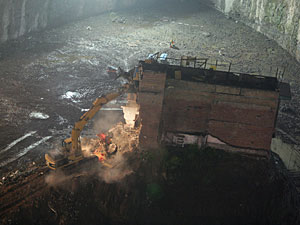After building designs were revealed for the 2008 Beijing Olympics a few years ago, reports turned to stories of displaced local residents and the destruction of historic architecture as the city began revamping its infrastructure. A photo that recently made the front page of newspapers worldwide best captured the activity: a lone house standing defiantly amid a giant construction pit. Nicknamed the “Nail House,” the diminutive dwelling finally succumbed to a backhoe on April 3—its owner, Wu Ping, joining the estimated 300,000 people who have been displaced by construction. But behind these dramatic scenes, a preservation ethic is gradually emerging. Some of the highest profile developments currently under way in Beijing preserve and incorporate old buildings.

In the Qianmen neighborhood, Beijing Dashalan is converting a series of hutongs—traditional courtyard houses—into a residential and retail corridor. And nearby, Handel Lee, a lawyer who developed two adaptive-reuse projects on the Bund in Shanghai, is transforming the Legation Quarter, a 4-acre estate that once housed foreign diplomats, into an upscale retail and entertainment property. Within five landmarked buildings that display a mix of Chinese and Victorian architecture, Gilles & Boissier is designing a restaurant for chef Daniel Bouloud; and Andy Hall, a British architect based in Shanghai, is working on an outpost of the Bouhjis Club.
Journalist Wang Jun is widely seen as sparking China’s nascent preservation movement. His 2003 book Beijing Record highlighted the forgotten heritage of Liang Sicheng, an urban planner active in the 1950s. Liang, who incidentally happens to be the uncle of architect Maya Lin, devised a plan for Beijing that was a modern way of preserving the past while integrating the new.
“This book about Liang influenced both the government and the common people more than any other book written by urban planners,” observes Jiang Jun, who edits the architecture magazine Urban China. “A thinking arose that architectural preservation is not only a moral-consciousness problem, but a problem linked to rational urban planning.”
Jiang adds that the government is slowly realizing that rather than treating Beijing like a tabula rasa, there is value to saving historic buildings and open space. Also, due to recent efforts to flush out government corruption, it is more cautious about greenlighting every new development. Beijing’s preservation policy is by no means set, Jiang notes, and it remains to be seen what will happen after 2008. “It’s still going to be a turning point of the preservation. It will be much more difficult to make a change to the policy after the Olympic Games, when growth is slowing down.”


Post a comment to this article
Report Abusive Comment